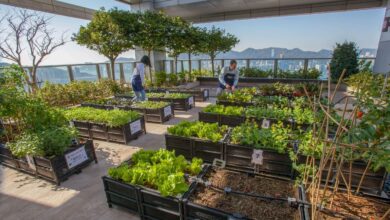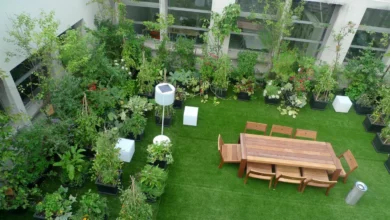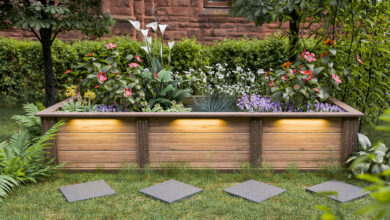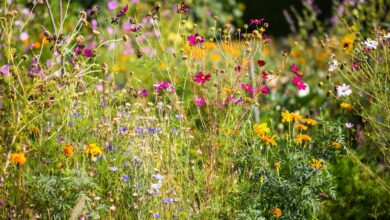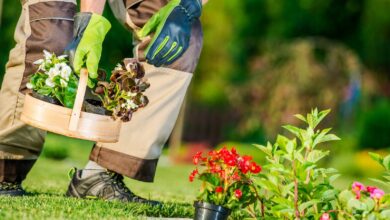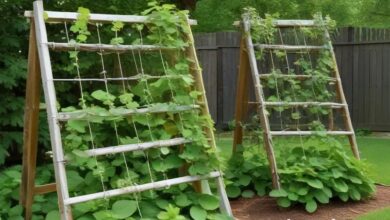Small Space Herb Garden Ideas for Kitchen Windowsills
Discover practical small space herb garden ideas for kitchen windowsills. Learn to grow fresh herbs indoors with easy tips on containers, care.
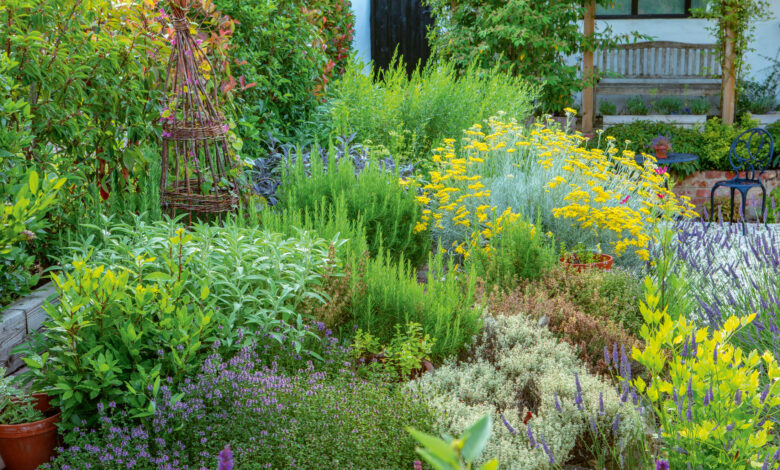
Transform your kitchen windowsill into a thriving source of fresh, flavorful herbs regardless of how small your living space may be. A windowsill herb garden offers urban dwellers and apartment residents the perfect solution to enjoy homegrown produce without requiring outdoor space or extensive gardening experience. Whether you’re preparing pasta with fresh basil, brewing tea with homegrown mint, or garnishing dishes with aromatic parsley, having fresh herbs within arm’s reach revolutionizes your cooking while saving money on expensive grocery store packages.
Growing herbs indoors has surged in popularity as more people embrace sustainable living and seek connections with nature from within their homes. A small space herb garden provides economic benefits, environmental advantages, and therapeutic value. Unlike traditional gardens demanding significant square footage and physical labor, container herb gardening on windowsills thrives in compact areas with minimal equipment. You’ll eliminate plastic packaging waste, reduce your carbon footprint, and enjoy superior flavor and nutritional content compared to dried alternatives.
This comprehensive guide explores innovative kitchen windowsill herb garden ideas specifically designed for limited spaces. You’ll discover how to select ideal locations, choose appropriate containers, pick beginner-friendly herbs, and master essential care techniques. Whether you have a sunny south-facing window or need artificial lighting solutions, these practical strategies will help you establish a productive indoor herb garden, providing fresh culinary herbs throughout the year. Let’s dive into creating your own thriving windowsill oasis.
Benefits of Growing Herbs on Your Windowsill
Space-Saving and Convenient
A windowsill herb garden maximizes vertical space in homes with limited square footage. These compact gardens require only a few inches of windowsill depth while producing abundant harvests. The accessibility factor transforms meal preparation—instead of planning grocery trips or settling for dried herbs, you simply reach over and snip exactly what you need. This immediate access encourages culinary creativity and ensures you never waste partially used herb packages again.
Cost-Effective and Eco-Friendly
Growing your own herbs delivers significant financial savings over time. A single basil plant costs less than two grocery store packages yet produces continuous harvests for months. You’ll eliminate the environmental impact associated with commercial herb production, including transportation emissions and plastic packaging waste. Organic herb gardening at home also means controlling growing conditions and avoiding pesticide exposure entirely.
Health and Wellness Advantages
Indoor gardening provides therapeutic benefits beyond fresh produce. Nurturing plants promotes mindfulness, reduces stress, and creates calming daily rituals. Fresh culinary herbs contain higher concentrations of essential oils, vitamins, and antioxidants compared to dried versions. Having medicinal herbs like rosemary (supporting cognitive function) and mint (aiding digestion) readily available encourages regular consumption, naturally supporting overall health and wellness.
Choosing the Perfect Windowsill Location
Light Requirements
Light represents the most critical factor for growing herbs indoors successfully. Most culinary herbs require five to six hours of direct sunlight daily to thrive. South or southwest-facing windows provide optimal exposure, receiving maximum sunlight throughout the day. Mediterranean herbs such as rosemary, thyme, sage, and oregano demand full sun—six to eight hours of bright, direct light.
Conversely, herbs like mint, parsley, and chives tolerate partial shade or indirect light, making them suitable for east-facing windows or kitchens with moderate light exposure. Lack of adequate sunlight is the most common problem in windowsill herb gardens, so assess your available light honestly before selecting herbs.
Artificial Lighting Solutions
If your kitchen lacks sufficient natural sunlight, grow lights for herbs provide effective alternatives. Small LED-style lights can be mounted under hanging kitchen cabinets or in windows, delivering full-spectrum illumination that mimics natural sun. Position lights six to twelve inches above plant canopies, operating them fourteen to sixteen hours daily to compensate for absent natural exposure.
Temperature and Environment
Indoor herb gardens thrive in moderate temperatures between 60°F and 75°F—conditions typically maintained in climate-controlled homes. All herbs except basil perform best next to cool windowpanes, though avoid placing containers directly against cold glass during winter. Kitchen environments generally provide ideal humidity from cooking activities, though adequate air circulation remains essential to prevent fungal diseases and pest infestations.
Selecting Containers for Small Space Growing
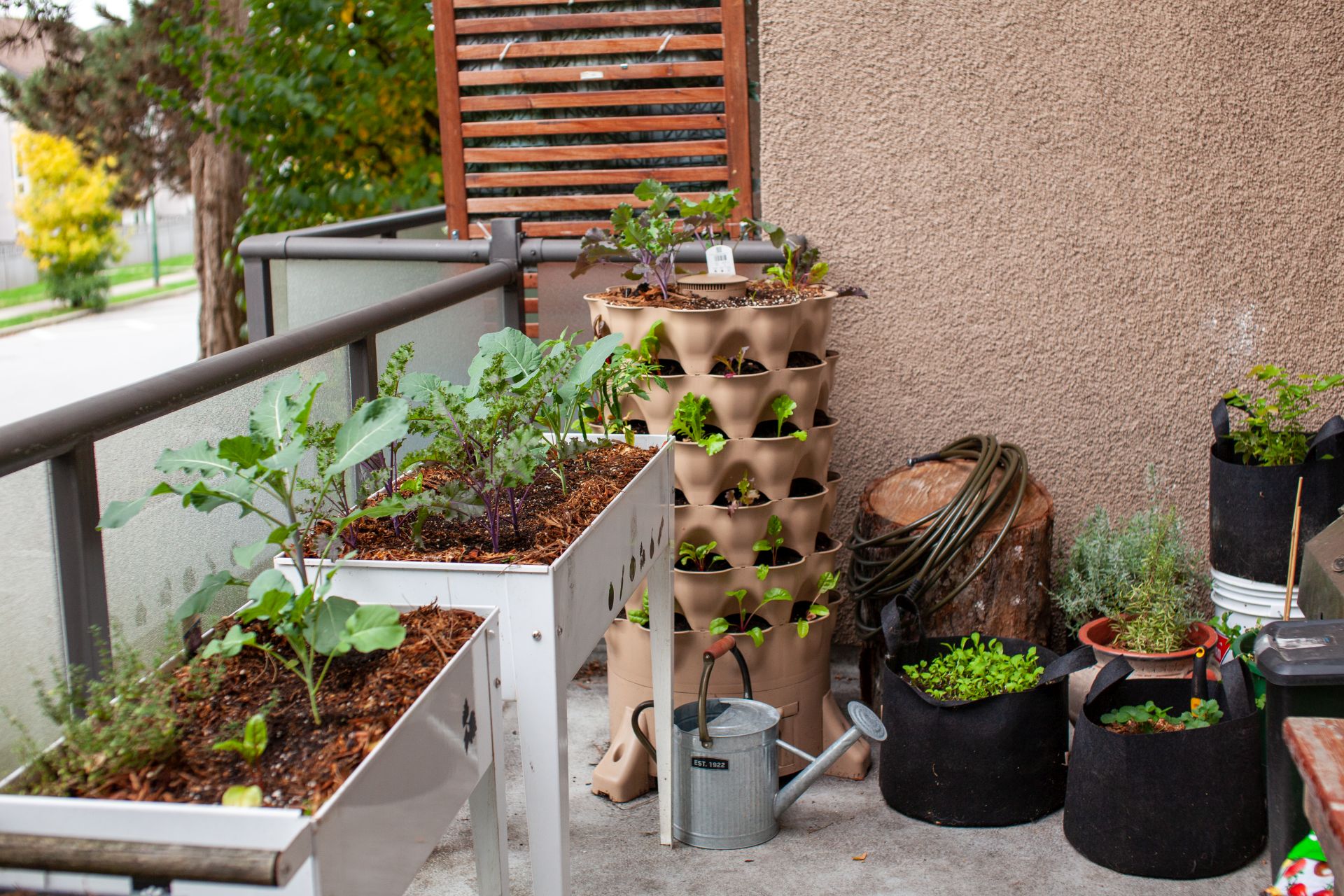
Size and Drainage Essentials
Containers should be at least four inches deep with proper drainage holes in the bottom for plants to thrive. Individual herb containers typically measure four to six inches in diameter for compact varieties, while larger herbs like rosemary and basil benefit from eight-inch pots. Drainage holes are essential—herbs cannot tolerate waterlogged soil conditions that promote root rot.
Place saucers or drip trays beneath pots to protect windowsills from water damage while catching runoff. Never allow containers to sit in standing water, as this creates perfect conditions for fungal diseases and root problems.
Container Material Options
Terracotta pots offer excellent breathability, allowing moisture to evaporate through porous clay walls—ideal for Mediterranean herbs preferring drier conditions. However, these containers dry out quickly and require more frequent watering. Plastic containers retain moisture longer, reducing watering frequency for busy gardeners and moisture-loving herbs like basil and parsley. Glazed ceramic pots combine decorative appeal with excellent moisture retention.
Creative Container Ideas
DIY herb garden enthusiasts repurpose household items into unique planters. Clean tin cans with drilled drainage holes create industrial-chic containers perfect for compact herbs. Vintage teacups, mason jars with gravel drainage layers, and decorative mugs all transform into functional planters with minimal modification. Long rectangular planters or window boxes accommodate multiple plants in single containers, maximizing limited windowsill space while creating unified displays.
Best Potting Mix for Container Herbs
Proper Soil Composition
Never use outdoor garden soil for container herb gardening—it compacts in pots, restricting drainage and suffocating roots. Select a high-quality potting mix rather than heavier potting soil, which provides better texture and drainage that herbs need. Quality potting mixes contain primarily organic matter, including peat moss or coconut coir, compost, and perlite or vermiculite, creating g light, well-draining texture.
Mediterranean varieties like rosemary, thyme, and sage prefer leaner, faster-draining soil. For these herbs, mix standard potting soil with equal parts perlite or sand to increase drainage and reduce fertility—mimicking their native rocky, poor-soil environments.
Organic Amendments
Incorporate well-aged compost into potting mix before planting to introduce beneficial microorganisms and provide slow-release nutrients. Worm castings offer exceptional nutritional value, releasing nitrogen, phosphorus, and potassium gradually while improving moisture retention. Avoid chemical fertilizers that accumulate salt concentrations in containers, potentially burning delicate herb roots and altering flavor profiles.
Top Herbs for Windowsill Gardens
Basil: The Kitchen Favorite
Basil reigns as the most popular herb for indoor growing, beloved for aromatic leaves and culinary versatility. Sweet basil thrives indoors when grown from seed, though purchasing seedlings provides quicker harvests. Growing basil indoors requires warm conditions with consistent moisture and bright light—six to eight hours daily. Pinch off flower buds as they form to redirect energy into leaf production rather than seed development.
Mint: Hardy and Vigorous
Mint varieties adapt remarkably well to windowsill growing conditions, tolerating partial shade better than most herbs. Mint prefers consistently moist soil with good drainage. The aggressive growth habit that makes mint problematic in outdoor gardens becomes an advantage in containers where roots remain confined. Harvest regularly to prevent leggy growth and encourage fresh foliage production.
Parsley: Nutritious and Productive
Parsley grows well in partial sun, making it ideal for kitchens with moderate light exposure. Flat-leaf Italian parsley offers robust flavor preferred in cooking. Parsley performs best indoors when grown from seed, though seeds germinate slowly. Keep soil consistently moist and provide four to six hours of light daily. Harvest outer stems first, allowing the center growing point to continue producing new foliage.
Rosemary: Mediterranean Classic
Rosemary features woody stems and aromatic needle-like foliage, thriving on the dry side with excellent drainage. This perennial herb prefers full sun and infrequent watering—allow soil to dry between waterings to prevent root rot. Purchase established plants rather than attempting seed propagation, as rosemary grows slowly indoors. This herb requires minimal fertilization in a lean, sandy potting mix.
Thyme: Compact and Flavorful
Thyme varieties, including common thyme, lemon thyme, and creeping thyme, thrive in small containers with excellent drainage. These low-growing herbs tolerate dry conditions and demand bright light—six or more hours daily. The compact growth habit makes thyme perfect for small space gardening, while trailing varieties add visual interest cascading over container edges.
Chives: Foolproof Choice
Chives rank among the easiest herbs to grow indoors, adapting to various light conditions and tolerating cooler temperatures. These perennial herbs produce grass-like foliage with mild onion flavor. If you grow chives outside, you can easily split the plant and re-pot a section for windowsill use. Harvest by cutting outer leaves at the soil level, leaving inner growth to regenerate. The purple blossoms that appear in spring are edible and decorative.
Cilantro/Coriander: Fast-Growing
Cilantro performs best indoors when grown from seed, though it bolts quickly when stressed by high temperatures or inadequate water. This fast-growing annual herb prefers cooler temperatures. Succession planting—sowing new seeds every two to three weeks—ensures a continuous supply since individual plants have short productive periods.
Oregano: Low-Maintenance
Oregano grows well on the dry side, offering pungent, aromatic foliage essential in Italian, Greek, and Mexican cooking. This hardy perennial herb thrives with minimal attention, preferring full sun and infrequent watering in well-draining soil. Pinch growing tips regularly to encourage bushy, compact growth rather than leggy stems.
Sage: Aromatic Perennial
Sage requires excellent drainage and thrives when grown on the dry side, featuring soft, silvery-green leaves with an earthy, slightly peppery flavor. This perennial herb demands full sun and conservative watering—allow soil to dry between irrigations. Harvest leaves as needed, avoiding removal of more than one-third of foliage at once to maintain plant health.
Creative Small Space Herb Garden Ideas
Tiered Vertical Arrangements
Vertical herb gardens maximize limited windowsill space by stacking plants at multiple levels. Install floating shelves at different heights in front of or beside windows, creating tiers for herb containers. Position sun-loving Mediterranean herbs on upper shelves closest to light sources, while shade-tolerant varieties occupy lower levels receiving filtered light.
Hanging Planters
Hanging planters suspended from ceiling hooks or mounted brackets free up valuable windowsill real estate while adding visual interest. Trailing varieties like thyme, oregano, and certain mint cultivars work exceptionally well in elevated containers, cascading attractively over pot edges. Ensure hanging systems are securely anchored and include drip trays to prevent water damage below.
Window Box Gardens
Long rectangular planters fit perfectly on windowsills and can accommodate multiple herb plants in a single container. These boxes should measure fifteen to twenty centimeters deep to provide sufficient root space. Plant herbs with similar light and water requirements together—group basil, parsley, and cilantro as moisture-loving companions, or combine rosemary, thyme, and sage as drought-tolerant Mediterranean partners.
Repurposed Containers
DIY windowsill herb gardens embrace creative reuse of household items. Painted tin cans with drainage holes create uniform, stackable containers. Vintage teacups, decorative mugs, and small pitchers transform into charming planters when filled with appropriate drainage materials and potting mix. When repurposing containers, verify materials are food-safe and ensure all include adequate drainage.
Mason Jar Gardens
Mason jar herb gardens offer charming containers for compact displays. Wide-mouth jars simplify planting and harvesting, while clear glass allows visual monitoring of moisture levels. Add a two-inch layer of pebbles at the bottom of the jars to create drainage reservoirs since glass containers cannot accommodate traditional drainage holes. Water carefully to prevent over-saturation, allowing soil to approach dryness between waterings.
Planting Your Windowsill Herbs
Seeds vs. Seedlings
Basil, parsley, and cilantro perform best indoors when grown from seed, though seeds require patience and ideal germination conditions. Most herb seeds germinate within one to three weeks with consistent moisture, warmth (65-75°F), and appropriate light. Purchasing herb seedlings from nurseries provides instant gratification with plants ready for harvesting within weeks. Choose compact, bushy plants with vibrant foliage color indicating good health.
Proper Planting Technique
When transplanting, place plants at the same soil level as their original nursery pots, gently covering with soil and pressing around the edges. Fill containers with potting mix to within one inch of the rim, providing space for watering without overflow. Gently firm soil around herbs after planting to eliminate air pockets while avoiding over-compaction.
Transplanting Store-Bought Herbs
Potted grocery store herbs often contain multiple seedlings crammed into single containers. Carefully separate these densely planted herbs, gently teasing apart root systems and transplanting into individual containers for healthier growth. Water newly transplanted herbs thoroughly and shield them from direct sun for several days while they recover.
Propagating from Cuttings
Many perennial herbs propagate readily from stem cuttings, providing free plants from existing specimens. Take three to four-inch cuttings from healthy, non-flowering stems using clean, sharp scissors. Remove lower leaves, leaving only top foliage. Place cuttings in water, changing it every few days until roots develop—typically within two to four weeks for easy-rooting herbs like mint, basil, oregano, and sage.
Watering and Feeding Windowsill Herbs
Proper Watering Techniques
Most herbs grown on the dry side include thyme, chives, oregano, and rosemary, while others prefer consistent moisture. Insert your finger one inch deep into the soil—if it feels dry at this depth, water thoroughly until liquid drains from the bottom. Mediterranean herbs require infrequent watering, preferring soil that dries completely between irrigations. Conversely, basil, parsley, and mint prefer consistently moist conditions with soil that never fully dries out.
Pots indoors have a tendency to dry out faster, so stick your finger in the soil to check for moisture—the top layer may be dry, but the soil should be moist at least an inch under the surface. Water the soil level rather than from above to keep foliage dry, preventing fungal diseases.
Recognizing Water Stress
Underwatered herbs display wilting leaves, dry soil pulling away from container edges, and stunted growth. Overwatered herbs exhibit yellowing leaves, mushy stems, and soil remaining perpetually wet with a sour or moldy smell. Root rot from excessive moisture causes catastrophic plant failure, often irreversible once established.
Fertilizing Container Herbs
Feed your herbs weekly during active growing periods, though diluted applications work better than full-strength fertilizer. Apply diluted liquid organic fertilizer every four to six weeks during spring through fall, reducing frequency in winter when growth slows. Fish emulsion provides balanced nutrition, while seaweed extracts supply trace minerals. Slow-release organic fertilizers mixed into potting soil at planting provide gradual nutrition over several months.
Harvesting and Maintaining Your Herbs
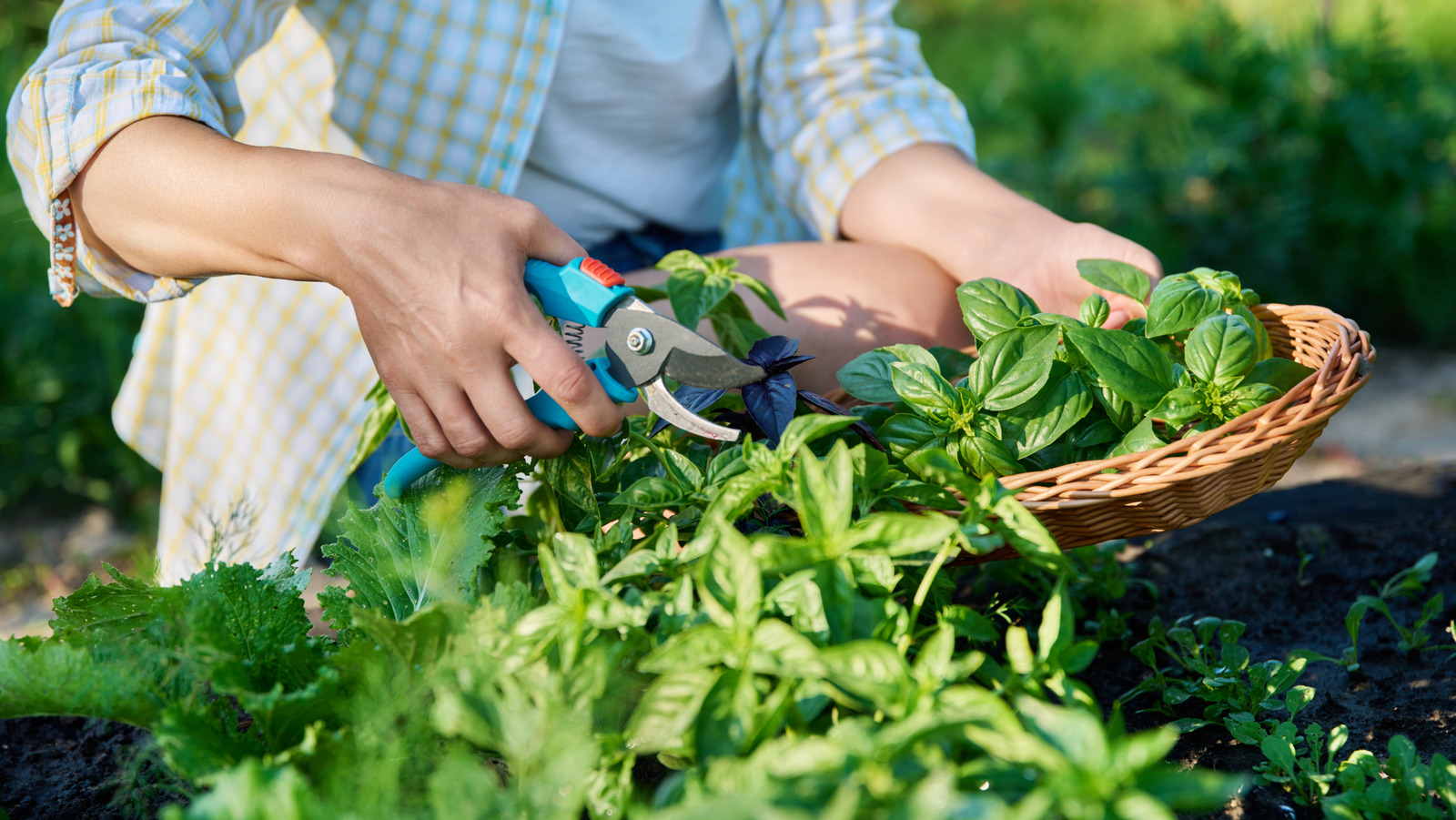
Proper Harvesting Methods
Regular harvesting encourages herbs to grow full and bushy, but never trim more than one-third of the plant’s foliage, as pruning more can stress the plant. Use clean, sharp scissors or pruning shears to make clean cuts that heal quickly. For leafy herbs like basil, mint, and oregano, pinch or cut stems just above leaf nodes—this pruning technique stimulates branching at the cut location.
Harvest herbs in the morning after dew dries but before afternoon heat—this timing produces peak flavor and aroma concentrations. With most herbs, snip two to three inches of the tips off to encourage more branching; for bushy herbs like parsley and cilantro, cut entire stems from the outside of plants.
Encouraging Bushy Growth
Pinching herbs involves removing terminal growing tips, redirecting growth hormones into lateral branches rather than upward extension. This technique creates compact, bushy plants rather than tall, leggy specimens. Begin pinching when seedlings reach six inches tall, continuing every few weeks. Remove flower buds immediately when they appear on basil—flowering signals the plant to cease leaf production and focus on seed development.
Preserving Excess Herbs
When production exceeds immediate consumption, preserve surplus through drying or freezing. Bundle stems and hang in a warm, dry location with good air circulation until crispy—one to two weeks, depending on humidity. Freezing preserves delicate herbs like basil, cilantro, and parsley better than drying. Chop herbs finely, pack into ice cube trays with small amounts of water or olive oil, and freeze for future use in soups, sauces, and sautés.
Troubleshooting Common Problems
Managing Pests
Indoor herb gardens face fewer pest problems than outdoor cultivation, but issues occasionally arise. Aphids—tiny insects clustered on new growth—can be removed by spraying plants with strong water streams or applying insecticidal soap. Spider mites appear as fine webbing on leaves, often affecting stressed plants in low-humidity environments. Increase humidity through pebble trays or regular misting, and wipe leaves with damp cloths to remove mites mechanically.
Addressing Diseases
Powdery mildew—white, dusty coating on leaves—results from poor air circulation and high humidity. Improve airflow with fans, reduce humidity levels, and water the soil level rather than wetting foliage. Remove affected leaves and apply organic fungicide solutions. Root rot manifests as yellowing leaves and wilting despite wet soil. This fungal disease results from overwatering and poor drainage—prevention through proper watering practices proves essential.
Solving Leggy Growth
Leggy herbs with elongated stems and sparse foliage indicate insufficient light. Move containers closer to windows, supplement with grow lights, or increase artificial lighting duration. Prune back leggy growth by half, cutting just above leaf nodes to encourage branching. Pinch plants frequently to keep the windowsill herbs stocky and attractive.
Addressing Yellow Leaves
Lower leaf yellowing on otherwise healthy plants indicates normal aging—remove spent foliage. Overall yellowing suggests nutrient deficiencies, particularly nitrogen. Apply diluted liquid fertilizer to restore green coloration. Yellowing with wilting despite adequate moisture indicates root problems, possibly from overwatering or root-bound conditions.
Seasonal Care Strategies
Winter Maintenance
Growing herbs indoors during winter presents unique challenges as daylight hours decrease. If you don’t have a reliably sunny window, provide some type of plant lighting. Supplement natural light with grow lights operated fourteen to sixteen hours daily to compensate for the weak winter sun. Combat dry air from heating systems by grouping herbs or using pebble trays filled with water beneath containers.
Reduce watering frequency during winter as plants enter semi-dormant periods with slowed growth rates. Allow soil to approach dryness more thoroughly between waterings than during active growing seasons. Discontinue fertilization or reduce to minimal applications every two months.
Summer Care
Hot summer conditions stress indoor herbs, particularly when windowsills become excessively warm from direct sun. Monitor temperatures near windows—if they exceed 85°F, move containers back from the glass or provide shade during peak afternoon heat. Increase watering frequency as higher temperatures and longer daylight accelerate evaporation.
Refreshing and Replanting
Start seeds of new plants to replace the ones you are using, as no plant lives forever, and many herbs like basil and dill are actually annuals that will try to go to seed within four to six months. Container herbs deplete soil nutrients after months of growth. Refresh gardens annually by transplanting into fresh potting mix or removing the top two inches of depleted soil and replacing it with fresh compost-enriched potting mix.
Creative Uses for Fresh Windowsill Herbs
Culinary Applications
Fresh windowsill herbs elevate everyday cooking with intense flavors impossible to replicate with dried alternatives. Basil forms the foundation of classic pesto and caprese salads. Mint brightens tabbouleh and refreshes beverages. Rosemary perfumes roasted potatoes and focaccia bread. Cilantro provides essential flavor for salsas and guacamole. Parsley contributes fresh taste to chimichurri and Middle Eastern salads.
Herbal Teas and Beverages
Fresh herbs for tea provide caffeine-free, healthful beverages full of flavor and therapeutic benefits. Mint tea aids digestion naturally. Sage tea soothes sore throats with antimicrobial properties. Create infused waters by adding fresh herbs to cold water—mint and basil pair beautifully with fruit like strawberries or citrus. Fresh herb cocktails feature prominently in modern mixology—muddle mint for mojitos or basil for gin smashes.
Natural Remedies and Household Uses
Medicinal herbs from windowsill gardens support home health care naturally. Sage gargles relieve sore throats. Peppermint alleviates digestive discomfort and headaches. Rosemary aromatherapy improves concentration. Create aromatic sachets by drying rosemary and mint to freshen drawers and closets. Make natural cleaning solutions by infusing herbs in vinegar for antimicrobial kitchen and bathroom cleaning.
More Read: DIY Vertical Garden Wall Step-by-Step Tutorial With Photos
Conclusion
Creating a small space herb garden on your kitchen windowsill represents an accessible, rewarding approach to sustainable living and culinary excellence. Through strategic container selection, proper soil preparation, and attentive care, even the smallest windowsill transforms into a productive indoor herb garden providing fresh culinary herbs year-round. Whether you’re growing basil for pasta, mint for tea, or rosemary for roasted dishes, the convenience and superior quality of home-grown herbs revolutionize your cooking while reducing grocery expenses and environmental impact.
The windowsill gardening techniques outlined here empower urban dwellers to reconnect with nature, cultivate self-sufficiency, and enjoy the satisfaction of nurturing living plants from seed to harvest. Start small with beginner-friendly varieties like chives and mint, expand gradually as you gain confidence, and discover how these compact gardens enrich your home, health, and daily culinary experiences with minimal space requirements and maximum rewards.



